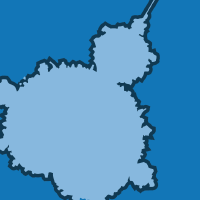Topic Editors

Computational Complex Networks
Topic Information
Dear Colleagues,
Computational methods and models in complex networks have recently been proved useful in investigating a variety of networked systems, where various network properties can be analyzed. They are widely used, for example, in network communication, control, prediction, estimation, and security. Recently, fruitful achievements in the research of computation in complex networks have been reported in the literature. At the same time, with the deepening of research, many new problems and challenges have emerged. The aim of this Topic is to provide the latest theoretical methods or practical algorithms to complex networks and their applications. It is hoped that the contents of this Topic can provide useful information and technical references for readers interested in this area, so as to promote network computation progress. This Topic has a wide scope, from theoretical to practical applications.
Dr. Alexandre G. Evsukoff
Dr. Yilun Shang
Topic Editors
Keywords
- complex system theory
- network algorithm
- network science
- complex network applications
- community detection
- artificial intelligence on graphs
- multilayer networks
- applications on real systems
Participating Journals
| Journal Name | Impact Factor | CiteScore | Launched Year | First Decision (median) | APC | |
|---|---|---|---|---|---|---|

Entropy
|
2.1 | 4.9 | 1999 | 22.3 Days | CHF 2600 | Submit |

Algorithms
|
1.8 | 4.1 | 2008 | 18.9 Days | CHF 1600 | Submit |

Computation
|
1.9 | 3.5 | 2013 | 18.6 Days | CHF 1800 | Submit |

Fractal and Fractional
|
3.6 | 4.6 | 2017 | 23.7 Days | CHF 2700 | Submit |

Preprints.org is a multidisciplinary platform offering a preprint service designed to facilitate the early sharing of your research. It supports and empowers your research journey from the very beginning.
MDPI Topics is collaborating with Preprints.org and has established a direct connection between MDPI journals and the platform. Authors are encouraged to take advantage of this opportunity by posting their preprints at Preprints.org prior to publication:
- Share your research immediately: disseminate your ideas prior to publication and establish priority for your work.
- Safeguard your intellectual contribution: Protect your ideas with a time-stamped preprint that serves as proof of your research timeline.
- Boost visibility and impact: Increase the reach and influence of your research by making it accessible to a global audience.
- Gain early feedback: Receive valuable input and insights from peers before submitting to a journal.
- Ensure broad indexing: Web of Science (Preprint Citation Index), Google Scholar, Crossref, SHARE, PrePubMed, Scilit and Europe PMC.


